In my view, F Major is relatively bright and cheerful. Even more so than E Major.
The key of F major scale includes the chords F Major, G Minor, A Minor, Bb Major, C Major (C7), D Minor, and E Diminished. It would be worth your time to also learn the Em7b5 chord as well as the 3-note triads of the scale, all over the neck.
The 7 Notes of F Major
Before we begin, we have to start with the notes of F Major which are shown down below.
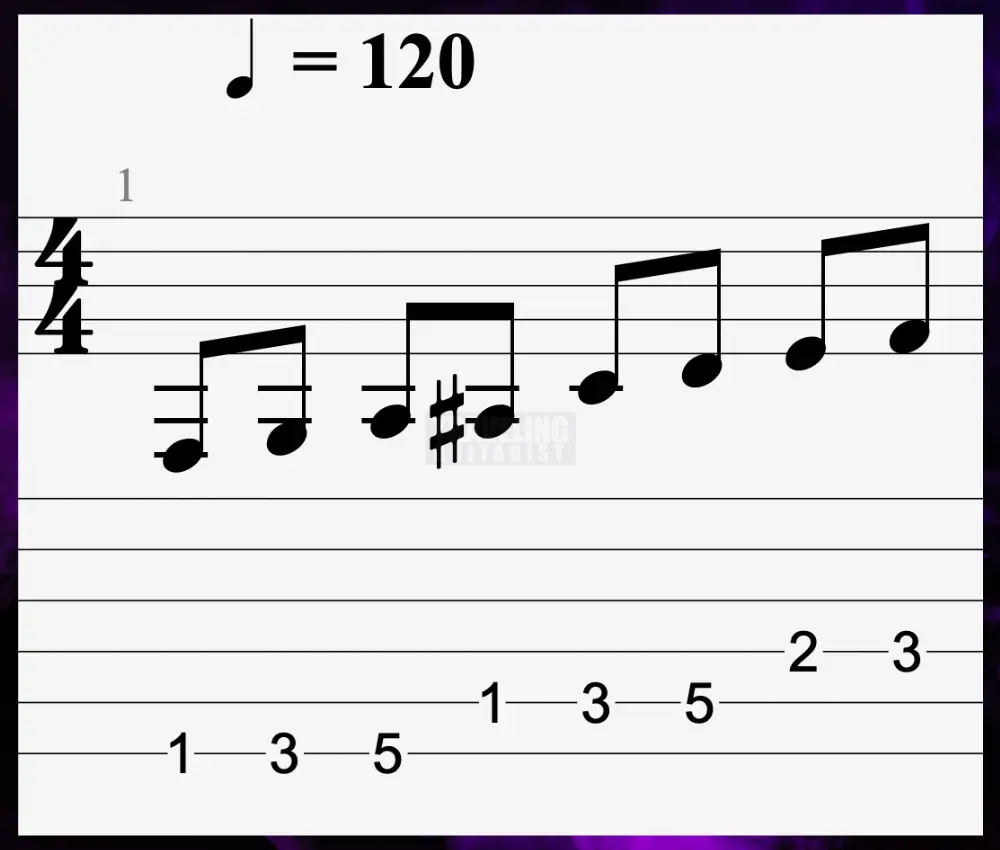
The Scale Degrees of F Major
1 – 2 – 3 – 4 – 5 – 6 – 7
Whole Tone – Whole Tone – Semi Tone – Whole Tone – Whole Tone – Whole Tone – Semi Tone
F, G, A, Bb, C, D, E,
What makes a chord? You need a root, third, and a fifth to make a standard chord in Western harmony.
A major chord, such as F major, consists of a root (F), a major third (F to A), and a perfect fifth (F to C).
A Major 3rd Interval is a distance of 4 semi-tones (or 4 frets).
A Minor Chord, such as G Minor, consists of a root (G), a Minor 3rd (G to Bb), and a Perfect 5th (G to D).
A Minor 3rd Interval is a distance of 3 semi-tones.
A Diminished Chord, such as E Diminished, consists of a Root (E), a Minor 3rd (E to G) and a Diminished 5th (E to Bb).
A Diminished 5th interval is a distance of 6 semi-tones.
We’re going to use these intervals throughout the remainder of the article so pay attention.
All 7 Chords of F Major
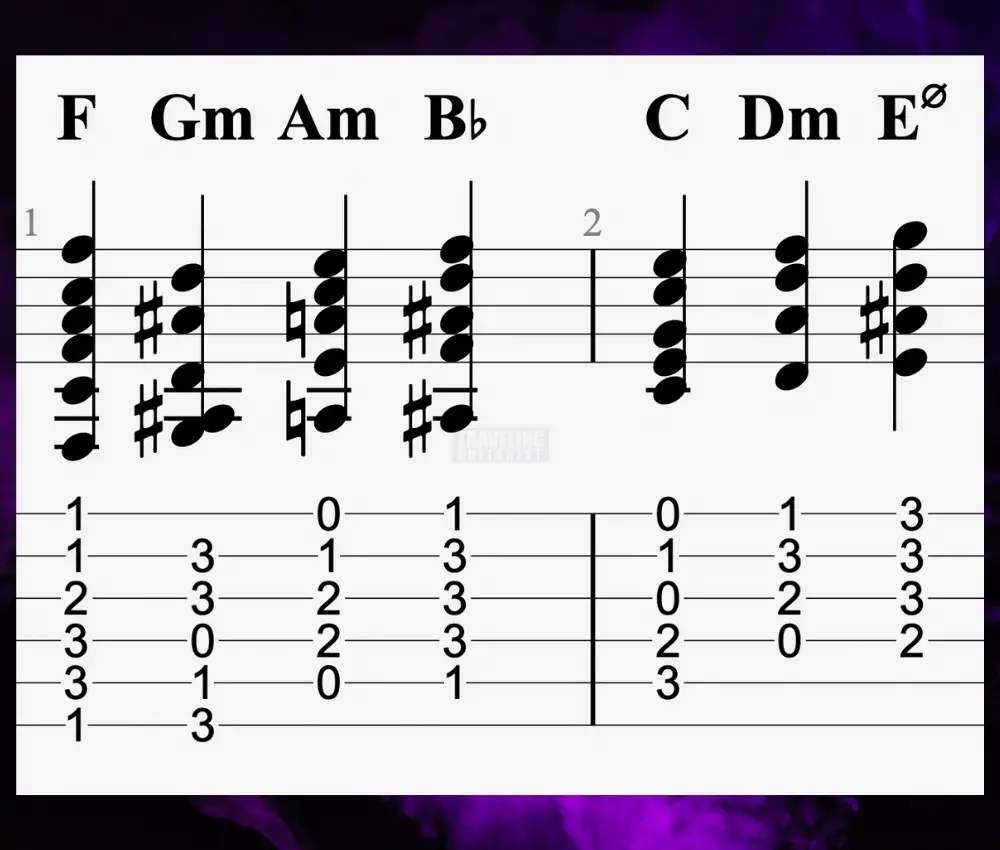
If you add the minor 7th to the C Major chord (the Bb), this will make the C Major chord a Dominant 7th – a B7.
A Dominant 7th chord, for example, a C7, is made up of a Major 3rd (C to E), Perfect 5th (C to G), and Minor 7th (C to Bb).
1) F Major
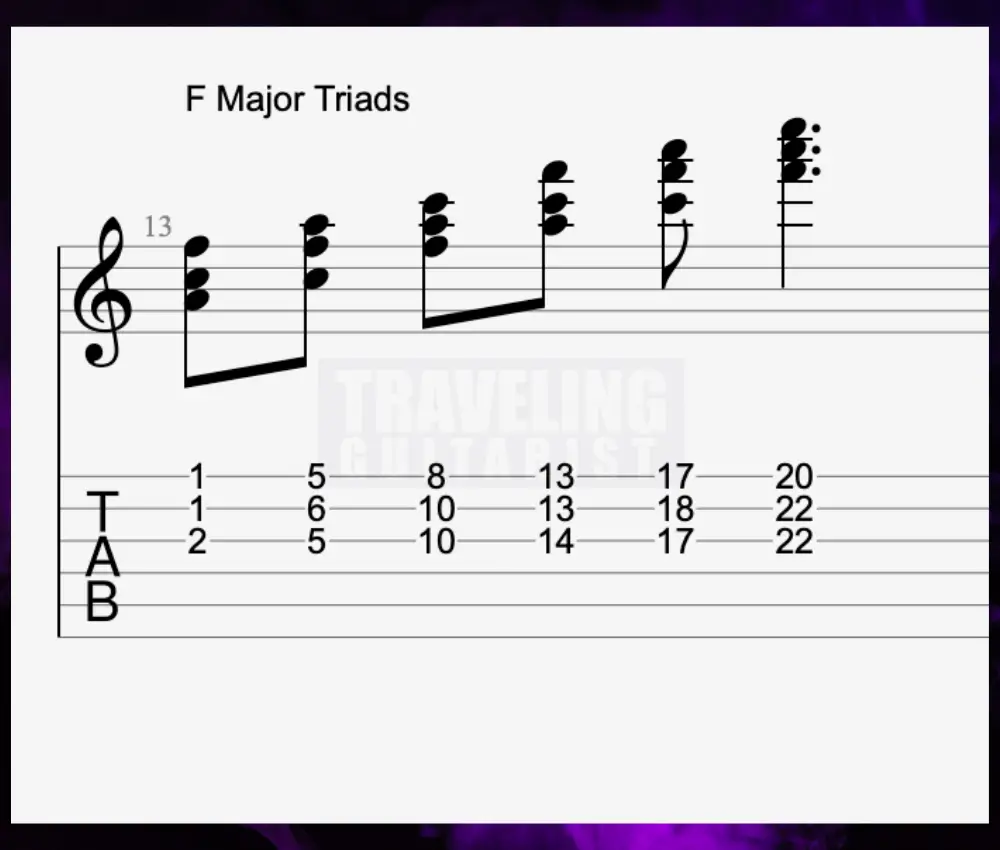
F Major has the notes F, A, and C in it.
The A of the F Major chord is the Major 3rd. It’s the part of the chord that gives it its major sound because the distance between the F and A is a major 3rd (4 semitones).
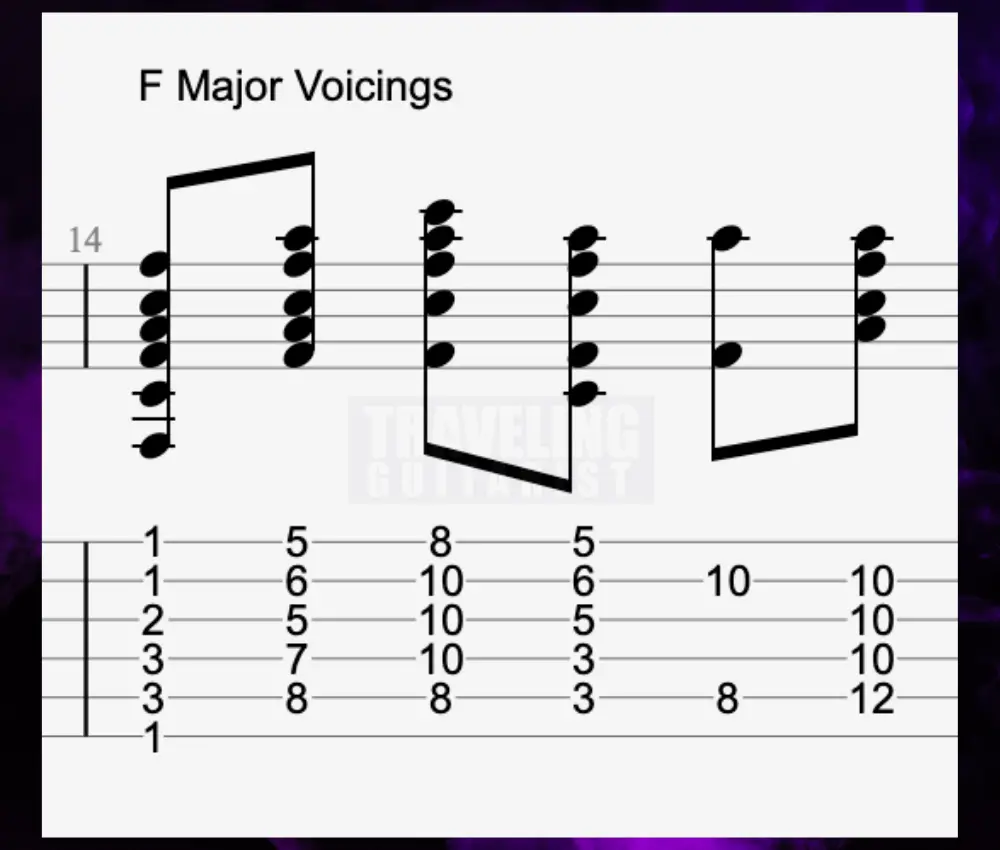
To turn the F Major chord into an F Major 7th, add the 7th note of the scale to it (E), making it F, A, C, and E. The distance between the F and E is a major 7th (11 semitones).
2) G Minor
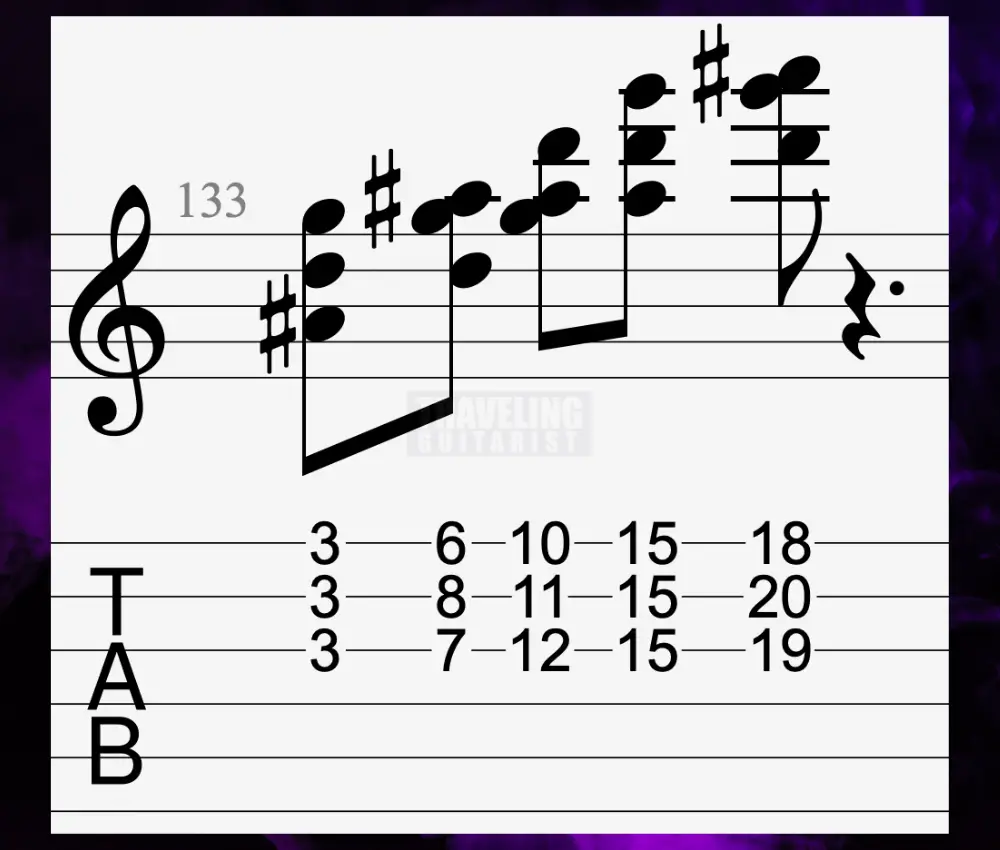
G minor requires the notes G, Bb, and D.
The G note is the operative tone that makes the chord minor. This is because the interval between G and Bb is a minor third (3 semi-tones).
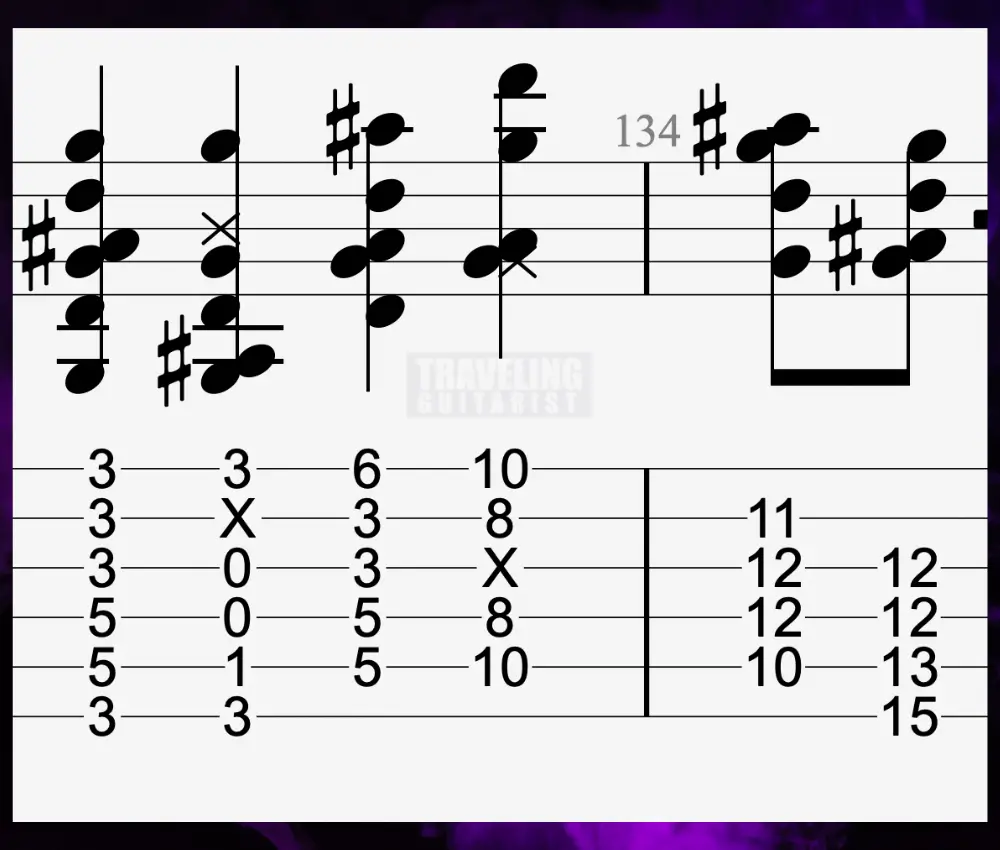
By adding an F note to the chord, the minor 7th, we get the Gm7.
3) A Minor
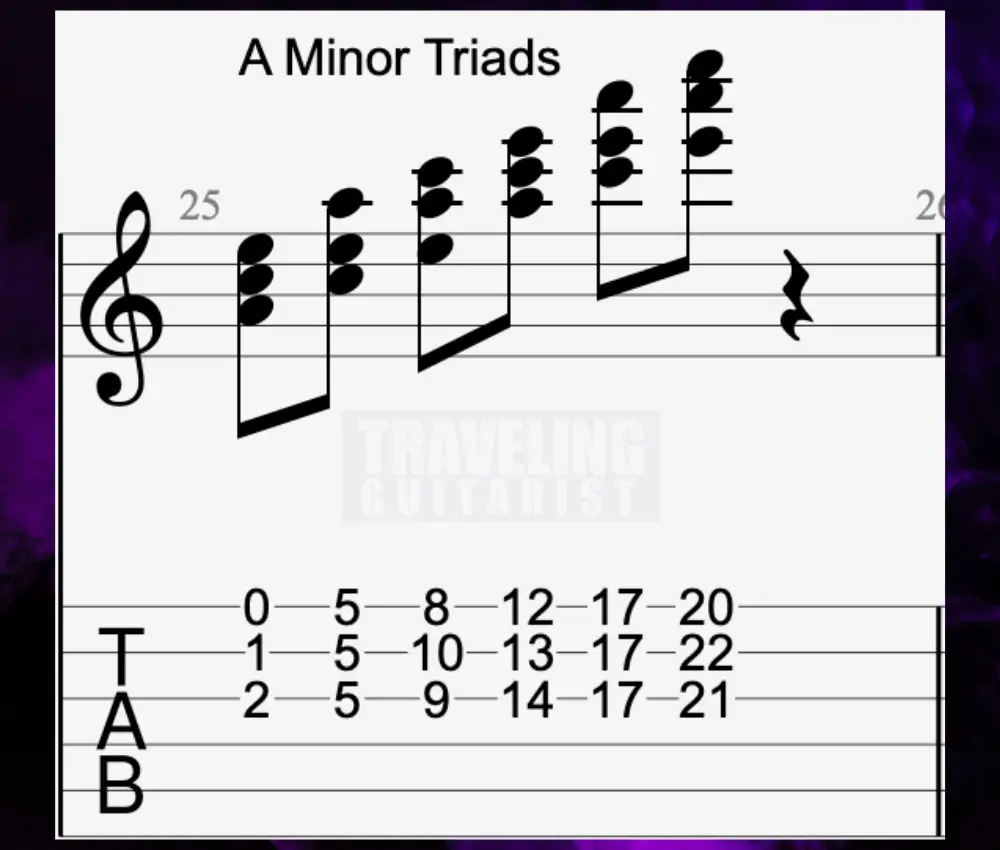
A minor requires the notes A, C, E.
The C note is the operative tone that makes the chord minor. This is because the interval between A and C is a minor third (3 semi-tones).
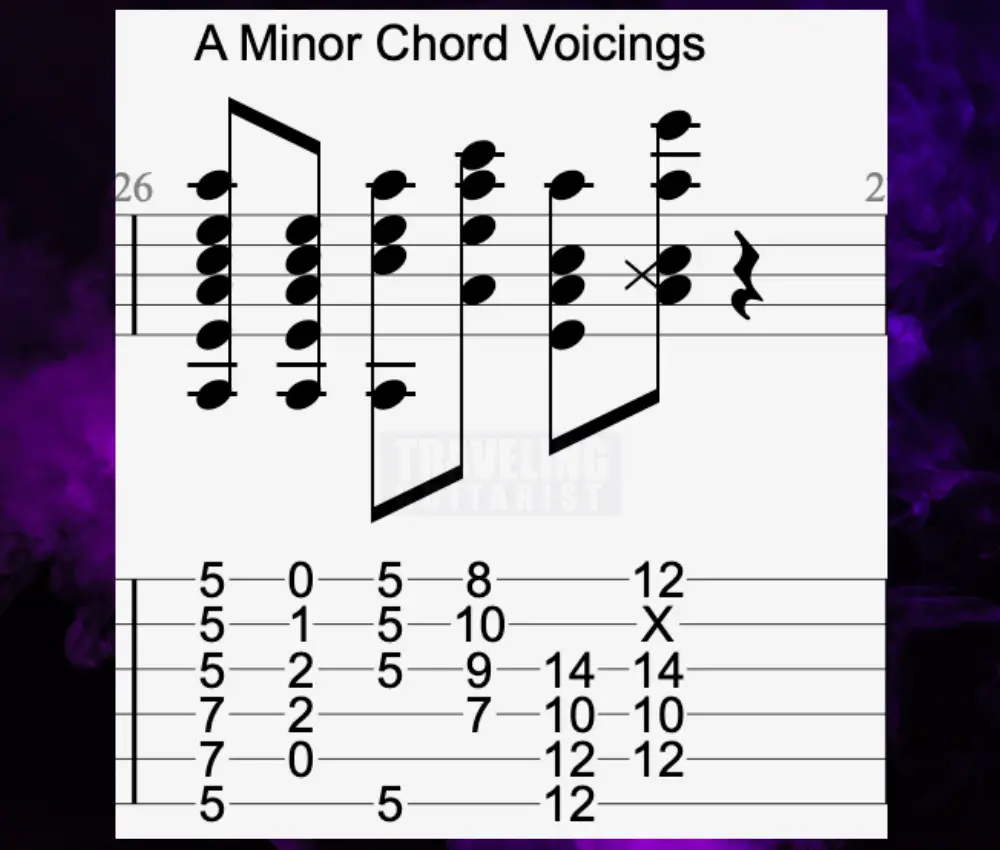
To make an A Minor 7th chord, we just have to add the 7th note (G) if A is the beginning of the scale. This gives us A, C, E, and G.
4) Bb Major
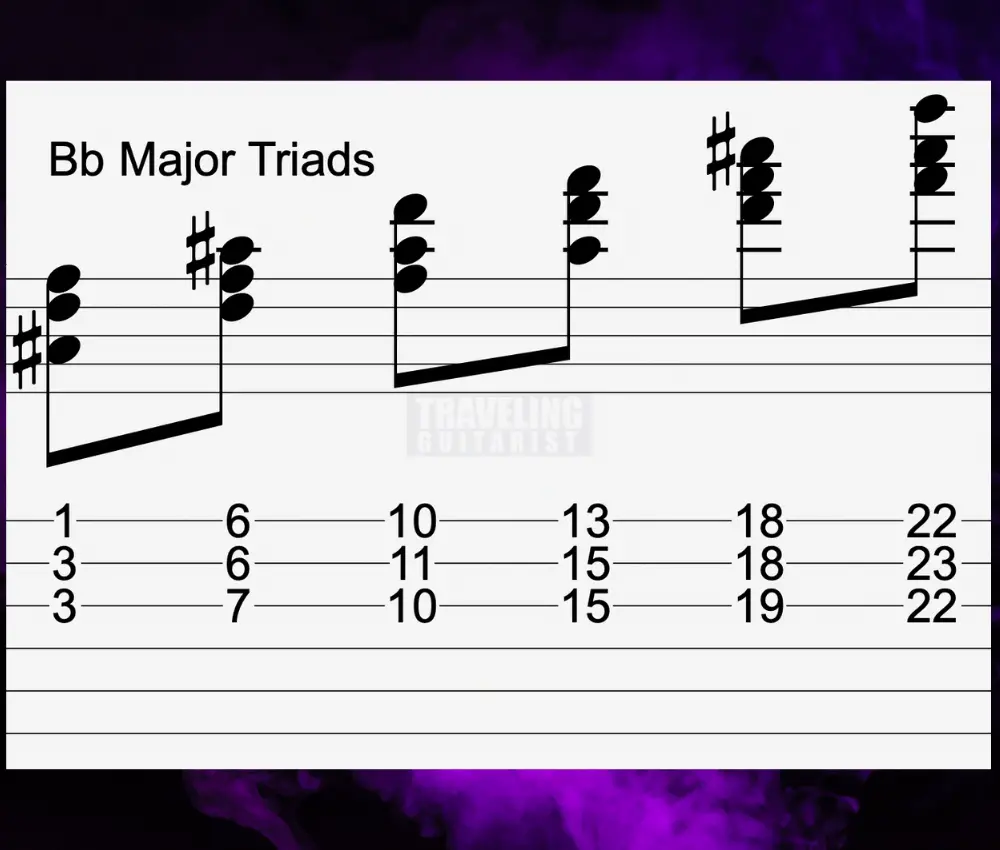
Bb Major requires the notes Bb, D, and F.
The D note is the note that makes the chord minor. This is because the interval between Bb and D is a major third (4 semi-tones).
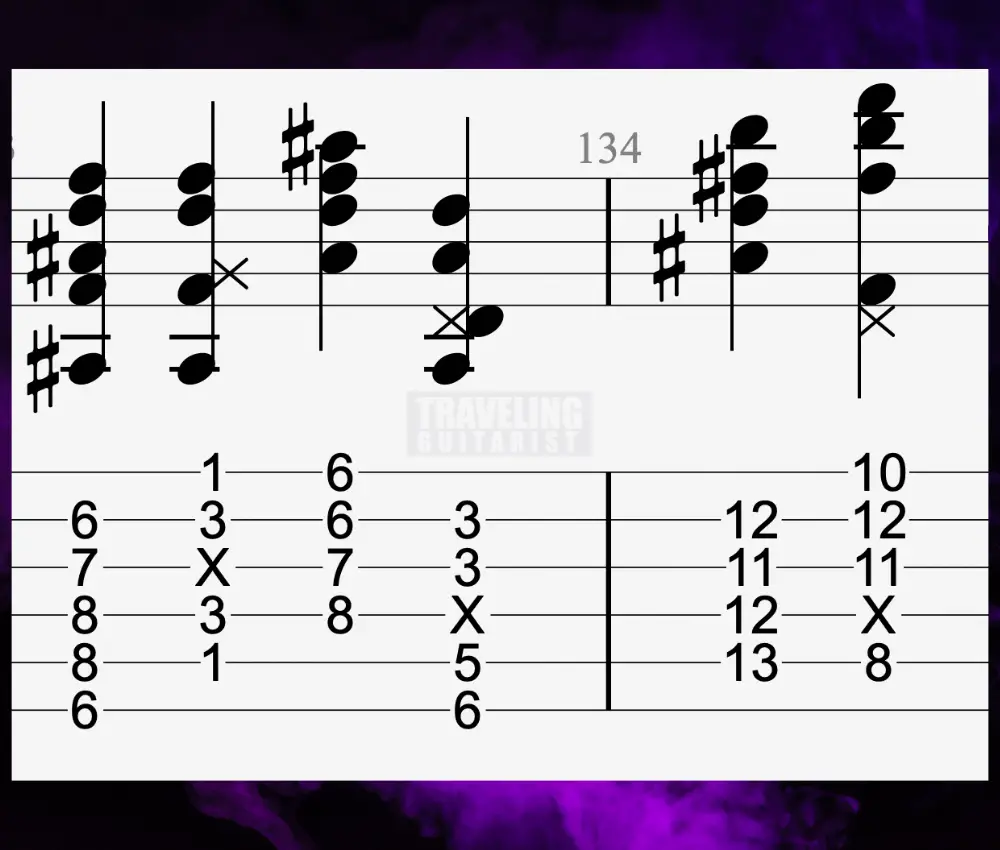
To make an Bb Major 7th chord, add the 7th note of the Bb Major scale (A). This will give us the notes Bb, D, F, A.
5) C Major (C7)
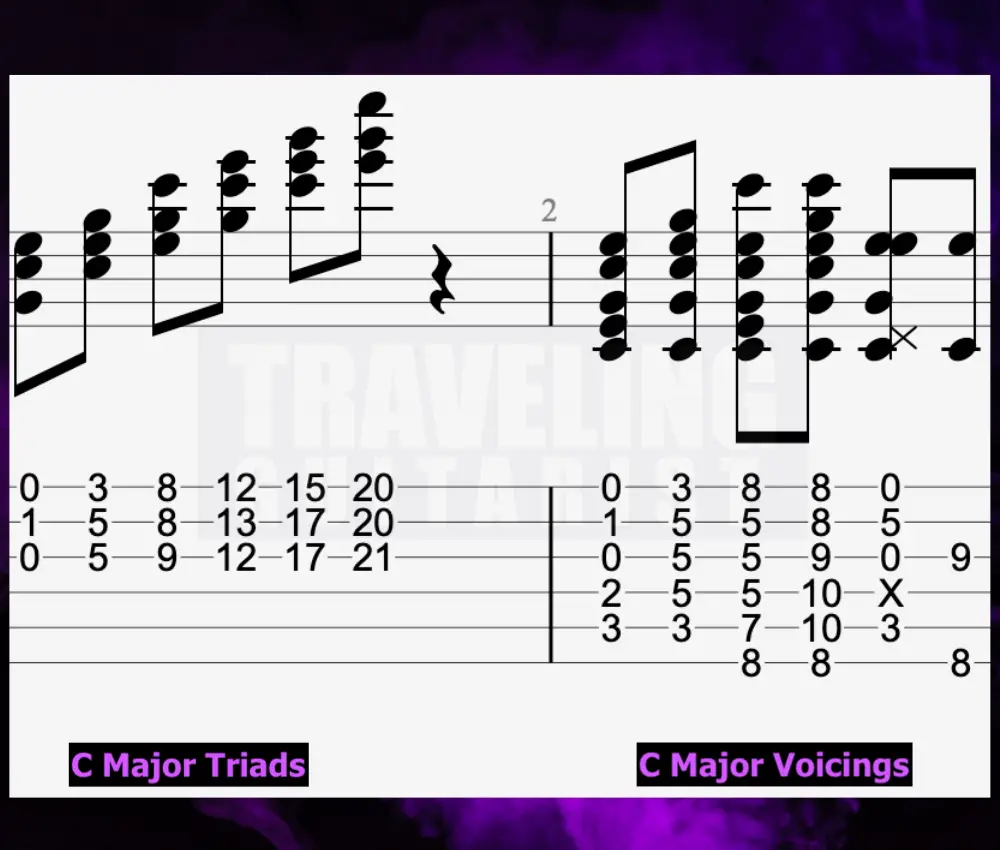
C Major requires the notes C, E, and G.
The E note is the note that makes the chord major. This is because the interval between C and E is a major third (4 semi-tones).
Adding the minor 7th to the C Major chord (the B note) transforms it into a Dominant 7th – represented as C7. I’ve included some C7 voicings below.
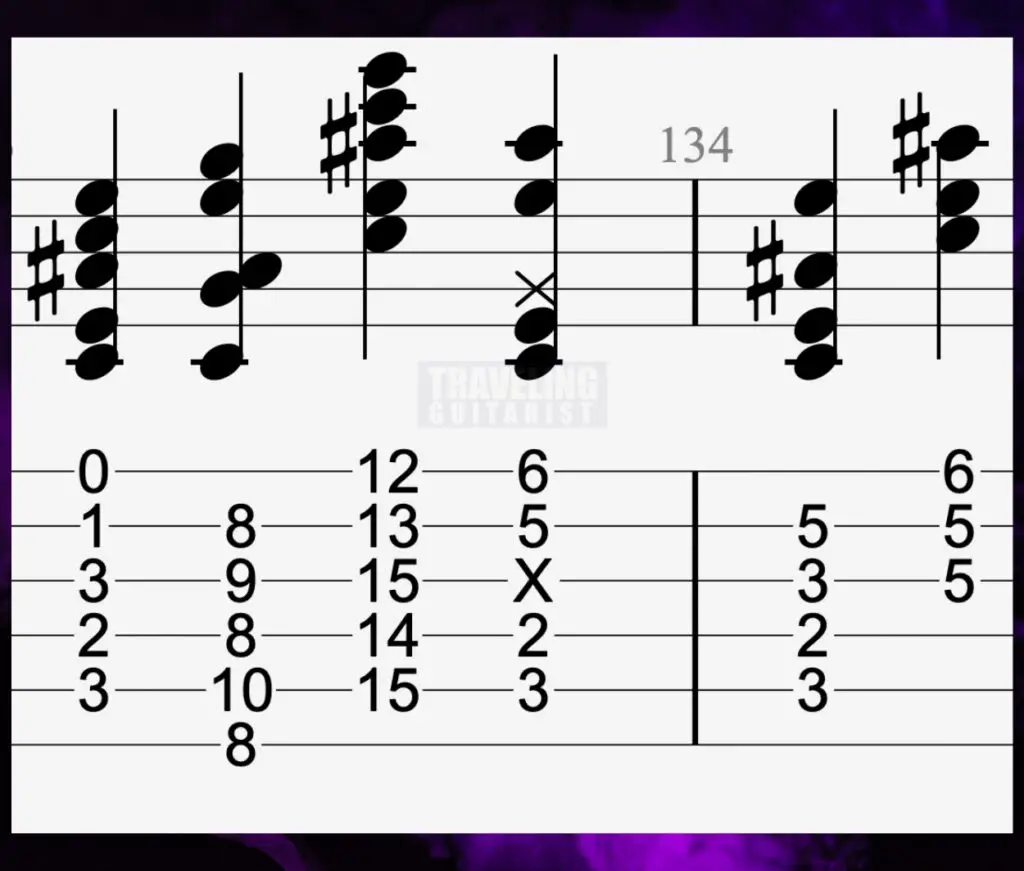
6) D Minor
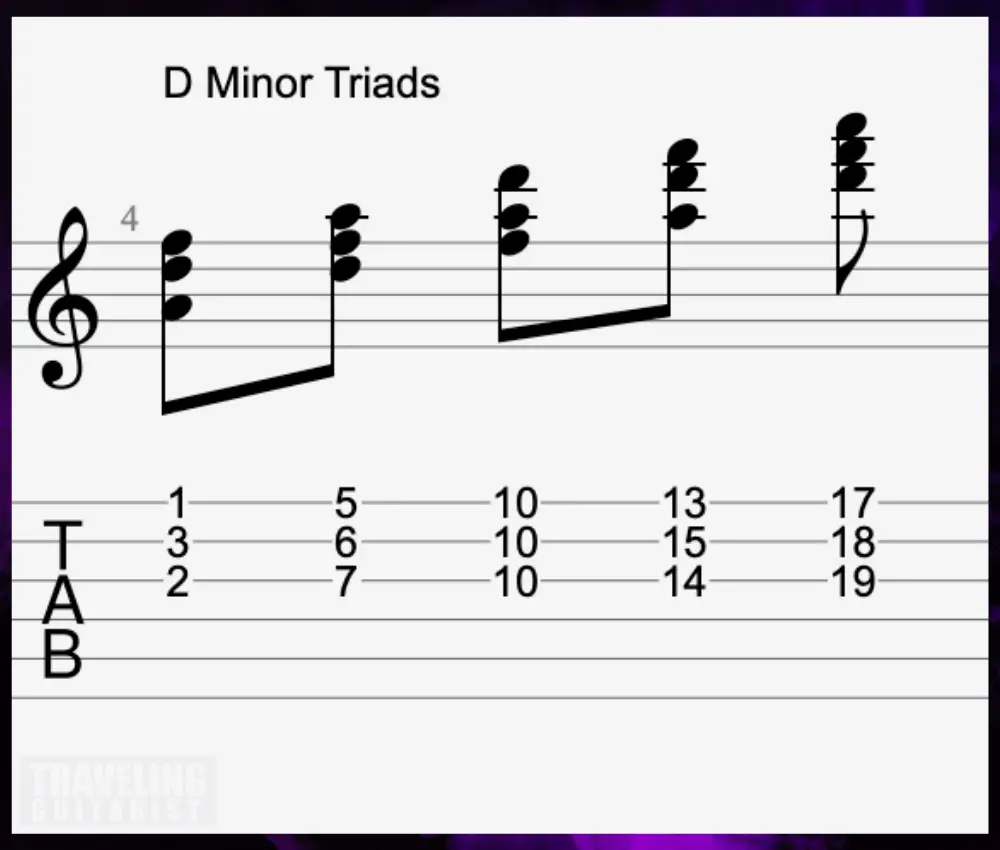
D minor requires the notes D, F, A.
The F note is the tone that makes the chord minor because the interval between D and F is a minor third (3 semi-tones).
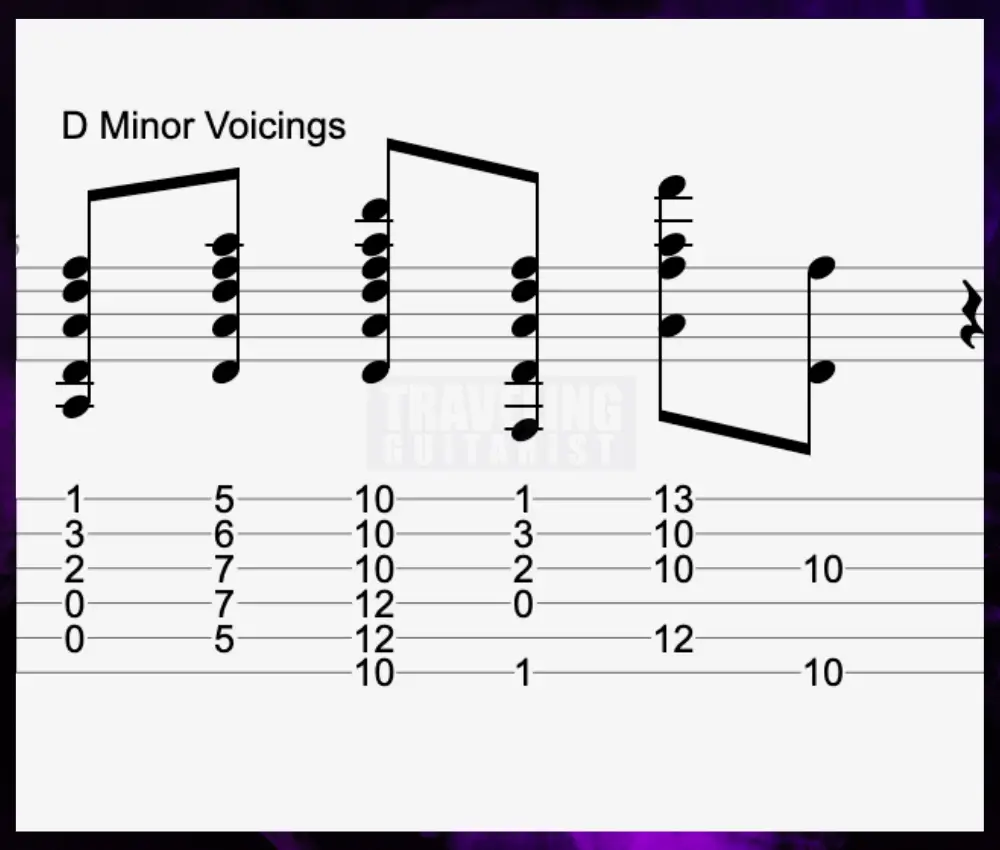
To make the D Minor chord a D Minor 7th, you would add the 7th counting from D (the C note).
7) E Diminished (Em7b5)
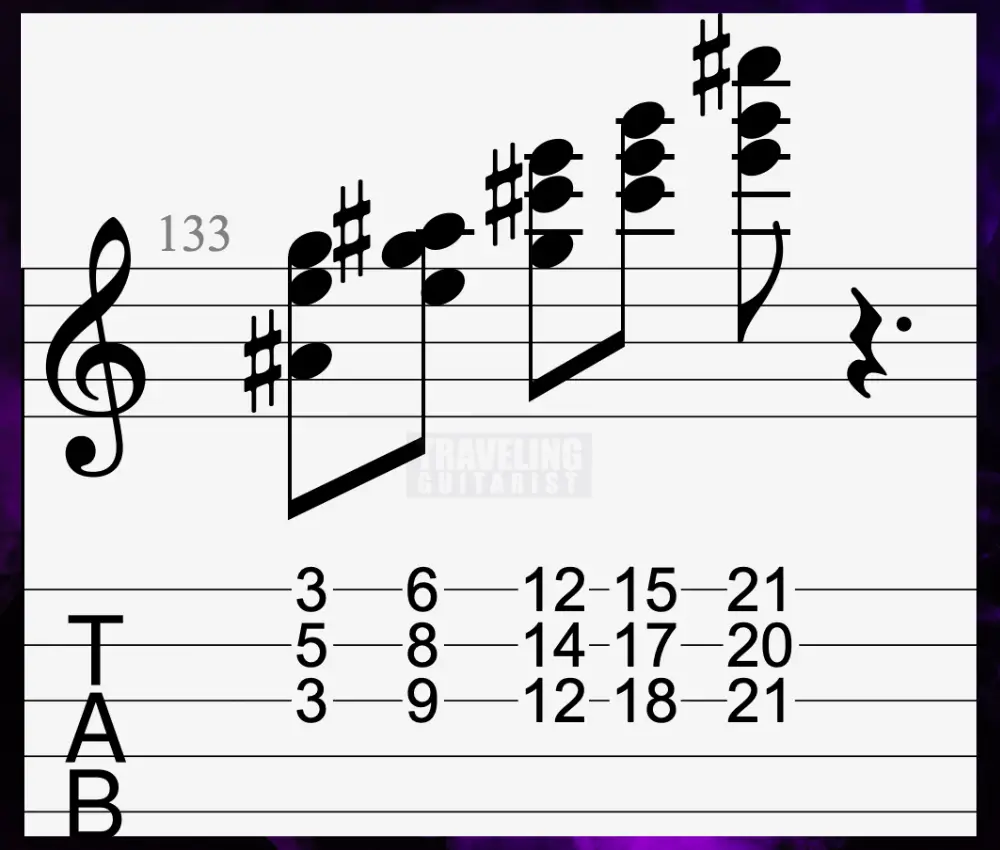
E Diminished requires the notes E, G, and Bb.
The G note is the tone that makes the chord diminished because it shortens the distance between itself and the 3rd and 5th.
E to Bb is a minor 3rd (3 semitones), and the distance between E and Bb is a diminished 5th (6 semitones).
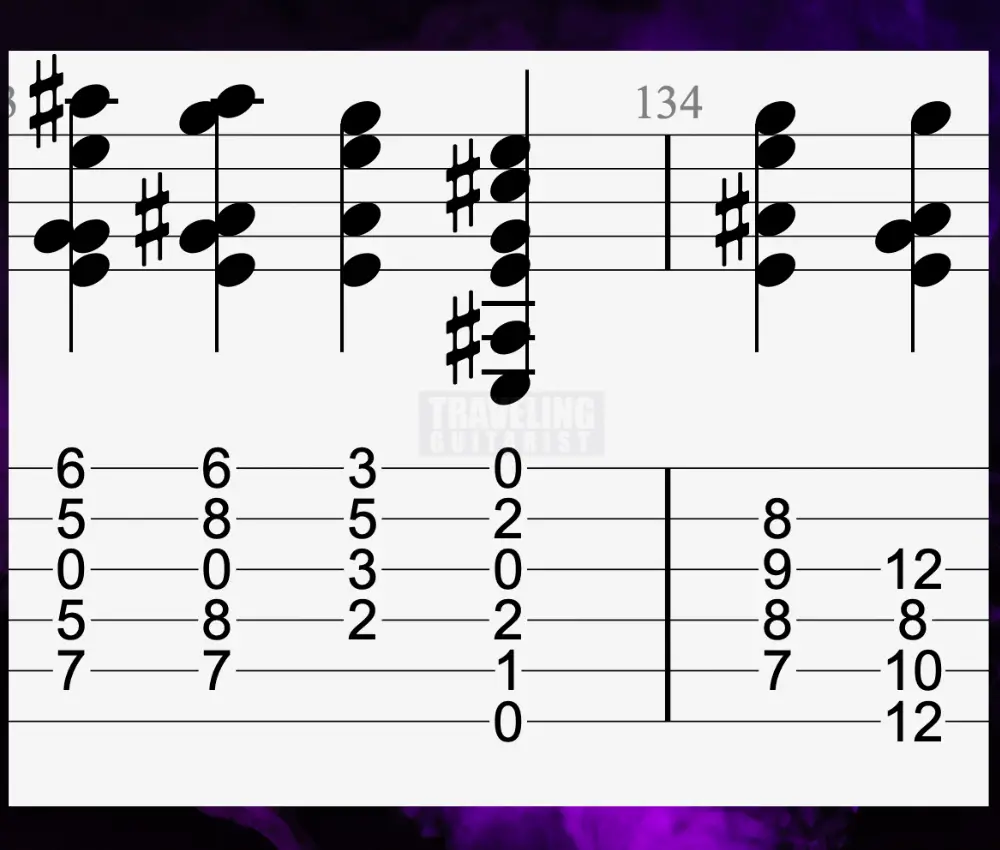
These are mostly E Diminished chords, rather than the more popular Em7b5.
What Are the Primary and Secondary Chords of F Major?
Every key has three primary chords and four secondary chords.
In a way, you can think of primary chords as primary colours and secondary chords as secondary colours.
The way you use and blend primary and secondary chords adds personality and emotional tone to your musical work.
Primary
In F major, our primary chords are F major, Bb major, and C major (C7). Whichever chord you want to think of as red, yellow, or blue is up to you.
Theoretically, our tonic, E major, wants to progress to the sub-dominant, A major, which then wants to climax at the dominant chord, B major, before resolving back to the tonic.
Secondary
In full, our secondary chords are G minor, A minor, D Minor, and E Diminished.
To paint a fuller picture, we can use secondary chords to add a bit more personalization to the work.
Let’s say that we find ourselves starting out with primary chords, moving from E major to A major. We could easily move on to a B7, but what else could we choose?
C7 has the notes C, E, G, and Bb. The last three notes of C7 make up the entire E diminished triad. Instead of transitioning to E Diminished, however, we could use the extended Em7(b5).
Learning to see chords for their similarities instead of their differences is the key to using primary and secondary chords effectively.
What Are The 3 Major Modes of F Major?
1) Ionian
The Ionian scale is the standard major scale.
Play the notes of F Major over an F Major chord to hear what the Ionian mode sounds like.
As I’ve explained in other articles, the C major scale is the benchmark scale that we use to compare and contrast all other scales.
We usually see it described like the way I showed at the very start of the article, in regular numbers from 1-7 with no sharps or flats or with a series of whole tones and semi-tones.
Here it is again for explanation’s sake:
1 – 2 – 3 – 4 – 5 – 6 – 7
Whole Tone – Whole Tone – Semi Tone – Whole Tone – Whole Tone – Whole Tone – Semi Tone
F, G, A, Bb, C, D, E (in the case of the F Major scale).
2) Lydian
The Lydian mode of F major is the fourth degree: Bb.
Play the notes of F Major over the Bb Major chord to hear what the Bb Lydian mode sounds like.
However, to make our chord progression sound distinct from the Ionian mode, we want to focus on its special qualities.
The Lydian scale is distinctive due to its inclusion of a raised fourth degree. In other words, a regular major scale is 1 – 2 – 3 – 4# – 5 – 6 – 7. You make this sound Lydian by raising the 4 to 4#:
The Lydian scale looks like this: 1 – 2 – 3 – 4# – 5 – 6 – 7.
For example, to make a C Major scale Lydian, you raise the F to an F#. Straightforward stuff.
3) Mixolydian
The C Mixolydian of F Major revolves around the V note: C.
Play the notes of F Major over a C7 chord to hear what that Mixolydian mode sounds like.
To play convincingly in C Mixolydian, we’ll follow the same basic principles discussed for Bb Lydian. However, Mixolydian’s defining tone is its flat seventh degree relative to the Major Scale:
Mixolydian: 1 – 2 – 3 – 4 – 5 – 6 – 7b
Ionian (Major): 1 – 2 – 3 – 4 – 5 – 6 – 7
Do you have any questions about anything? Let me know what you think should be added to the article in the comments below (including any mistakes).
Other Articles You May Be Interested In
- The Guitar Chords of E Major
- The Guitar Chords of D Major
- The Guitar Chords of C Major
- What Are the Most Beautiful Guitar Chords? [ANSWERED]
- What Guitar Chords Are Sad? [With Examples & Explanation]
- Why Is It Important To Learn Chords on Guitar? [SIMPLE]
- Why Triads Are Important To Learn on Guitar [ANSWERED]
- Free Fretboard Memorization Cheatsheet


 Written By :
Written By :
